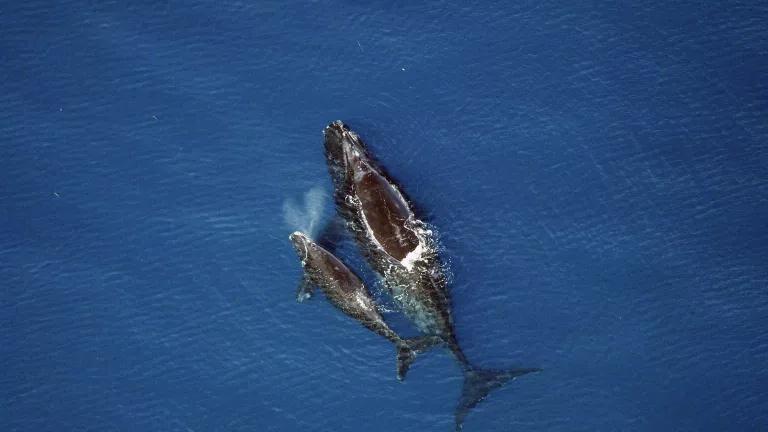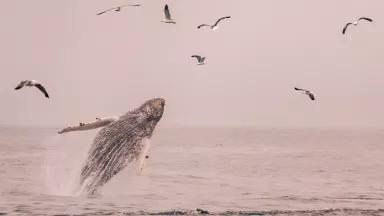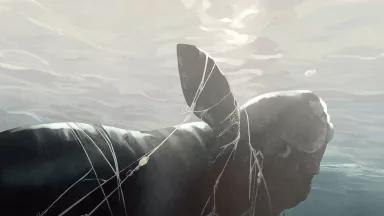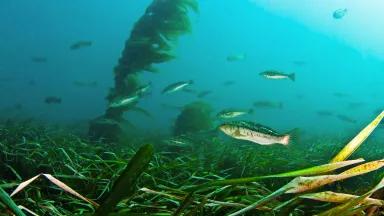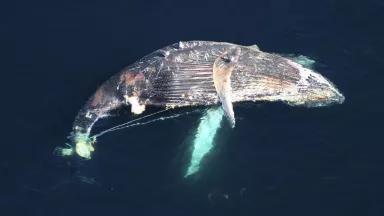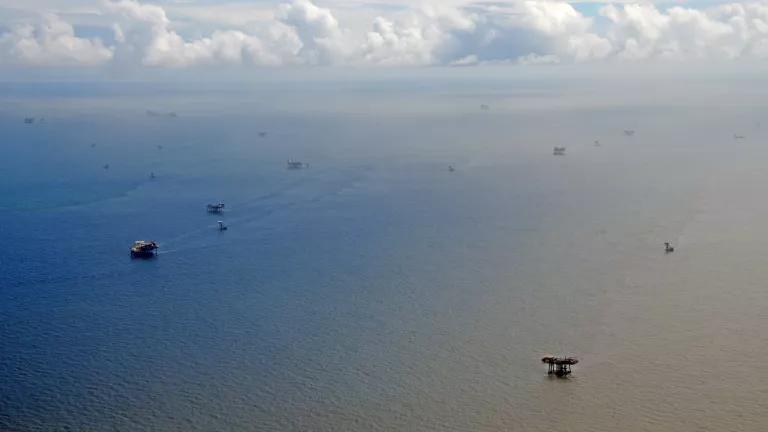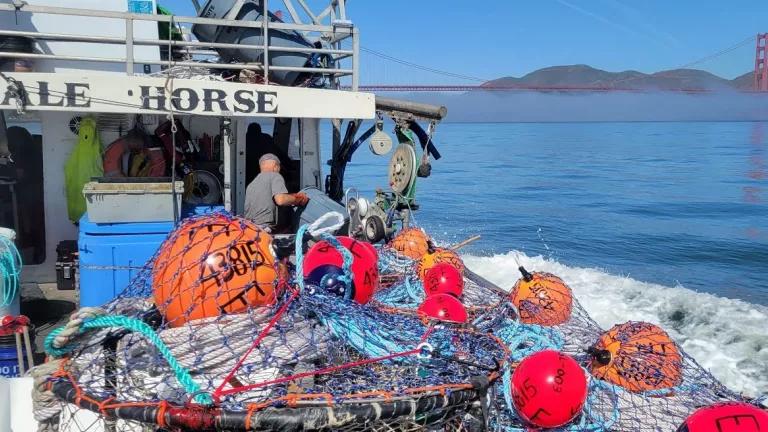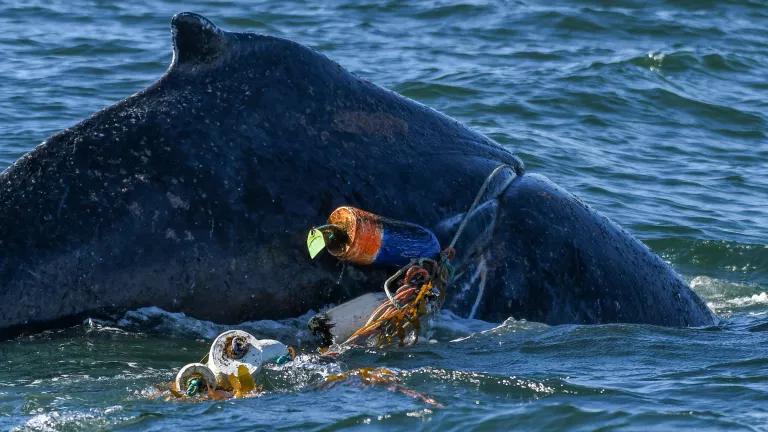Environmental Groups and Fishers Collaborate to Reduce Entanglements, Gear Loss in Southern California
Pop-up fishing systems virtually eliminate entanglement risk and enable fishing to continue in areas that would be otherwise closed to fishing to protect endangered species.
Innovative pop-up (also known as “on-demand” or “ropeless”) fishing systems have been successfully tested by pot/trap fishers in southern California, demonstrating the potential environmental and economic benefits of the technology.
Entanglements of endangered whales and sea turtles have increased off the West Coast. This elevated risk is directly linked to climate change, which is changing the distribution of prey and shifting the distribution of whales and sea turtles into areas where fishing activity is more intense, or where riskier gear types are used. The vertical buoy lines associated with fixed-bottom pot/trap fishing gear pose an outsized risk of entanglement to these species. Fish distributions are also changing, and harmful algal blooms are on the rise, altering the timing of fishing seasons and sometimes resulting in greater overlap of fishing activity and endangered species.
Entanglement has consequential impacts for fishing communities, including temporary closures of fishing areas, costly gear changes, and other regulatory burdens. Solutions are urgently needed to improve the ability of fishing communities to adapt and become more resilient to these climate-related risks and enable coexistence with endangered species.
Vertical buoy lines also increase the risk of gear loss as they become easily caught up in the propellers of passing boats. Without a surface buoy marking the location of the gear, a pot or trap may remain lost on the seabed. Traps and pots are generally not insurable, so the fisher bears the full cost of any gear that is lost. Lost gear also contributes to overall levels of marine debris, which negatively impacts the entire marine ecosystem. In some areas, the use of surface buoys can also be exploited by poachers, resulting in additional to financial loss for fishers.
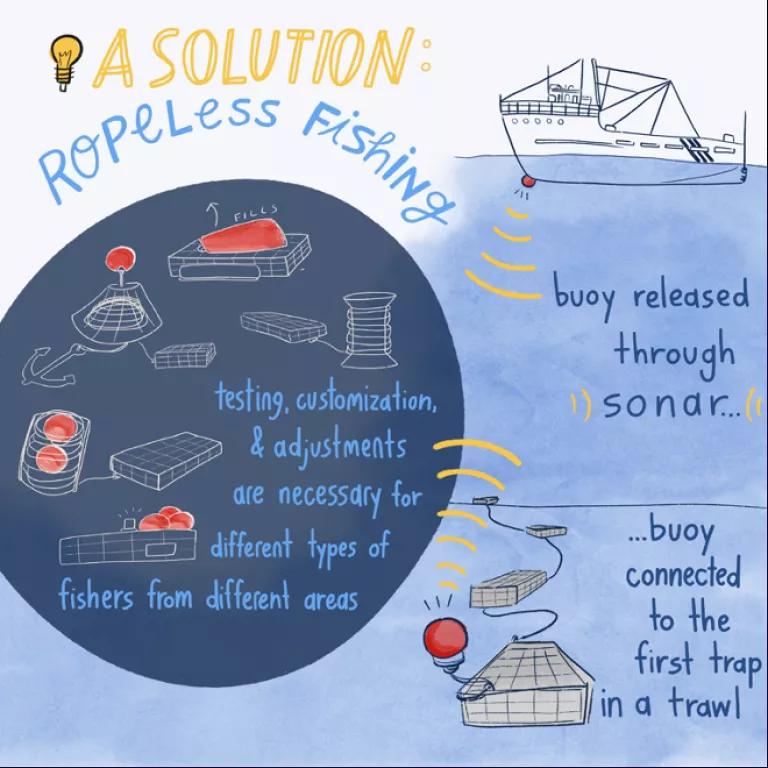
Jessica Russo/NRDC
Pop-up fishing systems provide a means to fish pots and traps without vertical buoy lines suspended in the water column. The systems virtually eliminate entanglement risk and enable fishing to continue in areas that would be otherwise closed to fishing to protect endangered species. Because the surface buoy is stored, for the most part, at depth, pop-up fishing systems are also expected to reduce gear loss and marine debris, as well as poaching risk. All these benefits could lessen the burdens borne by fishers as a result of regulatory and financial uncertainty.
The Marine Innovation Gear Alliance (MIGA)—formed by Endangered Habitats League, Ocean Defenders Alliance, NRDC, and Sustainable Seas Technology—envisions a world where marine wildlife and fishers can safely coexist, and where lost fishing gear is a thing of the past. To achieve this vision, MIGA is collaborating with fishing communities off the West Coast to test and introduce whale-safe fishing technologies that promote both economic and environmental resilience.
Through a pilot project conducted during the 2021-2022 fishing season, supported by funding by the Malk Nature Fund, fishers in the southern California region had their first hands-on experience with a variety of pop-up fishing systems. Fishers were trained to use the systems and provided feedback on the functionality and usability of pop-up fishing systems for their specific fisheries.
Pop-up fishing systems rely on virtual gear marking to locate and regulate and enforce commercial use of pop-up fishing systems. During the pilot project, fishers put a virtual gear marking system known as “The Hub” to the test. Developed by Sustainable Seas Technology and the Ropeless Manufacturers Workgroup, with funding from the Marine Mammal Commission, The Hub provides fishers from around the world with an easy-to-use interface to locate their pots/traps on the seabed using GPS no matter what pop-up technology they are working with. By virtually marking the location of the trap/pot, fishers may also experience a reduced risk of gear loss and poaching as only they know the location of their pots and traps.
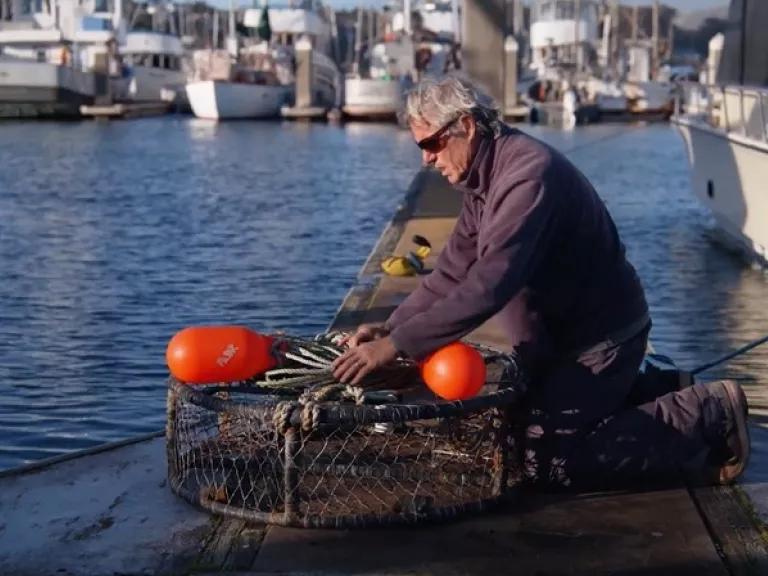
Bart Chadwick, a pop-up gear manufacturer, readies his technology for dockside testing
Sustainable Seas Technology
The pilot project demonstrated the multiple benefits of the pop-up fishing systems, including virtually eliminating the risk of whale and sea turtle entanglement, reducing gear loss and marine debris, and as a means of guarding against poaching.
MIGA and our collaborators in the fishing community are excited to now embark on the next phase of the project, which will have an increased focus on training fishers to use pop-up fishing systems and, crucially, on how to train other fishers to use the technology. These training efforts, paired with increasing access to pop-up fishing systems through the creation of a gear cache for fishers to use and maintain in their own community, are a key step toward empowering fishers and supporting their efforts to respond to entanglements while maintaining stable businesses and vibrant communities.
Fewer than 340 North Atlantic right whales remain—solutions like ropeless fishing systems can help.
Tell NOAA and BOEM to strengthen protections for this critically endangered species!
